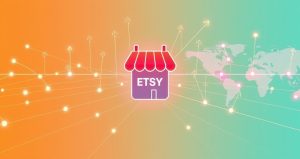For many artisans, crafters, and collectors, Etsy offers a unique global marketplace to showcase their creations and connect with customers. However, simply listing products is often not enough to achieve significant success. Effective Etsy marketing is crucial for standing out in a crowded digital landscape, attracting the right audience, and ultimately driving consistent sales. Understanding the nuances of this platform’s unique algorithm and user base is the first step toward building a thriving online business.
This comprehensive guide delves into various strategies designed to boost your Etsy shop’s visibility and foster sustainable growth. From optimizing your product listings to leveraging external marketing channels, we will explore actionable insights that can transform your entrepreneurial journey on Etsy. The goal is to equip you with the knowledge needed to implement a robust marketing plan, ensuring your unique offerings reach their full potential audience.
Understanding the Etsy Ecosystem: A Marketing Overview
Etsy operates as a specialized e-commerce platform, distinct from general retail sites, focusing primarily on handmade, vintage, and craft supplies. Its community-driven nature means that marketing on Etsy requires a tailored approach that respects its unique identity. Successful Etsy marketing is not just about advertising; it involves a holistic strategy encompassing search engine optimization, compelling product presentation, and exceptional customer service. Merchants must understand both the platform’s internal mechanics and the broader digital marketing principles.
The core of Etsy marketing revolves around making your products discoverable to potential buyers who are actively searching for specific items. This involves careful consideration of how shoppers browse, what keywords they use, and what influences their purchasing decisions. Unlike traditional retail, where large brands dominate, Etsy provides a level playing field where small businesses can thrive with the right strategic marketing efforts. Building a strong brand identity within the Etsy ecosystem is a continuous process.
Keyword Research for Etsy Success: Finding Your Audience
Effective keyword research is the cornerstone of any successful Etsy marketing strategy. It involves identifying the specific terms and phrases potential customers use when searching for products like yours. Start by using Etsy’s own search bar, observing the autocomplete suggestions, and analyzing what competitors are ranking for. Tools like Marmalead or eRank can provide deeper insights into search volume, competition, and long-tail keywords relevant to your niche products, such as “personalized wooden coasters” or “vintage crystal earrings.”
Beyond broad terms, focus on specific, descriptive keywords that accurately reflect your item’s attributes, materials, and intended use. For instance, if you sell handmade jewelry, consider “sterling silver minimalist necklace” instead of just “necklace.” This precision helps attract buyers with high purchase intent. Regularly reviewing and updating your keywords based on performance data and seasonal trends is a vital component of ongoing Etsy SEO. This continuous refinement ensures your Etsy shop remains relevant and highly discoverable.
Optimizing Your Etsy Listings: Beyond Keywords
While keywords are crucial, comprehensive listing optimization goes far beyond text. High-quality product photography is arguably the most impactful element in Etsy marketing. Clear, well-lit images from multiple angles, showcasing scale and detail, can significantly increase click-through rates. Consider lifestyle photos that help buyers visualize the product in use. A concise yet descriptive title, incorporating key search terms, along with a detailed product description that tells a story and answers potential questions, builds buyer confidence.
Accurate categorization, relevant attributes, and strategically chosen tags further enhance your listing’s visibility within Etsy’s search algorithm. Price your items competitively yet profitably, factoring in material costs, labor, and Etsy fees. For example, a handmade leather wallet might be priced to ensure a healthy profit margin after considering the cost of leather, thread, tools, and the time spent crafting. Offering variations in size, color, or customization options also caters to a wider audience, improving overall Etsy sales potential.
Etsy SEO Fundamentals: Getting Discovered Organically
Etsy SEO (Search Engine Optimization) is the process of optimizing your shop and listings to rank higher in Etsy’s internal search results. The algorithm considers various factors, including the relevance of your keywords, the quality of your listings, and your shop’s customer service history. Consistently receiving positive reviews and maintaining a good shop standing can positively impact your search rankings. High conversion rates, indicating that buyers are purchasing after viewing your listings, also signal quality to Etsy.
To improve your Etsy SEO, ensure every aspect of your listing—title, tags, description, and attributes—is cohesive and keyword-rich without being spammy. Regularly update your shop sections and create new listings to signal an active and engaged seller. Understanding that Etsy aims to connect buyers with the most relevant and high-quality items means focusing on providing an excellent overall shopping experience. This commitment to quality translates directly into improved organic visibility and sustained Etsy shop growth.
Leveraging Etsy Ads: Paid Promotion Strategies
While organic reach through Etsy SEO is vital, Etsy Ads offer a powerful way to quickly increase your shop’s visibility and drive targeted traffic. These paid promotions allow your listings to appear prominently in Etsy search results and on relevant category pages. When utilizing Etsy Ads, it is essential to set a clear budget and select specific listings that have proven conversion potential or are new products needing a boost. Monitoring your ad performance closely is key to optimizing your spend.
Analyze which keywords and listings are generating clicks and sales, and adjust your strategy accordingly. For example, if “custom pet portraits” is a highly converting ad keyword, allocate more budget there. Understand that Etsy Ads operate on a cost-per-click (CPC) model, meaning you pay each time a shopper clicks on your advertised listing. While the exact cost varies, effective targeting and compelling listings ensure a higher return on investment. Strategic use of Etsy Ads can significantly accelerate your shop’s journey to higher Etsy sales.
Off-Etsy Marketing: Expanding Your Reach
To truly maximize your Etsy marketing efforts, it’s crucial to extend your reach beyond the platform itself. Social media channels like Instagram, Pinterest, and Facebook are excellent for showcasing your products and directing traffic back to your Etsy shop. Create engaging content, utilize relevant hashtags, and interact with your audience to build a loyal following. Pinterest, with its visual search capabilities, is particularly effective for driving traffic to product-oriented businesses, similar to how Etsy operates.
Building an email list allows you to directly communicate with interested buyers, offering exclusive discounts, new product announcements, or behind-the-scenes content. A blog or website can also serve as a content hub, attracting organic search traffic through articles related to your products or craft. For instance, a jewelry maker might blog about “the history of amber” or “how to care for silver jewelry,” subtly linking back to their Etsy shop. Diversifying your marketing channels creates a resilient and broad online presence.
Analyzing Performance and Adapting Your Strategy
Continuous monitoring and analysis are indispensable components of effective Etsy marketing. Etsy’s built-in “Stats” section provides valuable data on shop views, listing views, conversion rates, and traffic sources. Regularly review these metrics to understand which marketing efforts are yielding the best results and where improvements can be made. For example, a high view count but low conversion rate might indicate an issue with your product photos, pricing, or description, prompting immediate adjustments.
Experiment with different strategies, such as varying your listing titles, trying new keyword combinations, or adjusting your ad targeting. This A/B testing approach helps identify what resonates most with your target audience. The e-commerce landscape is dynamic, and consumer preferences can shift. Therefore, an adaptable and data-driven Etsy marketing strategy ensures your shop remains competitive and continues to grow. Staying informed about Etsy updates and market trends will also guide your strategic decisions.
Developing a Holistic Etsy Marketing Plan: Key Takeaways
Succeeding on Etsy requires more than just creating beautiful products; it demands a well-rounded and persistent marketing approach. By integrating robust keyword research, meticulous listing optimization, and a deep understanding of Etsy SEO, sellers can significantly enhance their organic visibility. Supplementing these efforts with targeted Etsy Ads and a strong off-platform presence through social media and content marketing creates a powerful ecosystem for growth. The aim is to build a brand that resonates with buyers.
Ultimately, a successful Etsy marketing strategy is iterative, requiring continuous analysis, adaptation, and a commitment to providing excellent customer service. Focus on telling your unique story, showcasing the quality of your creations, and engaging authentically with your audience. This comprehensive strategy not only drives sales but also fosters a loyal customer base, transforming your Etsy shop into a thriving and sustainable online business. Embrace these principles to unlock your full potential on the platform.






